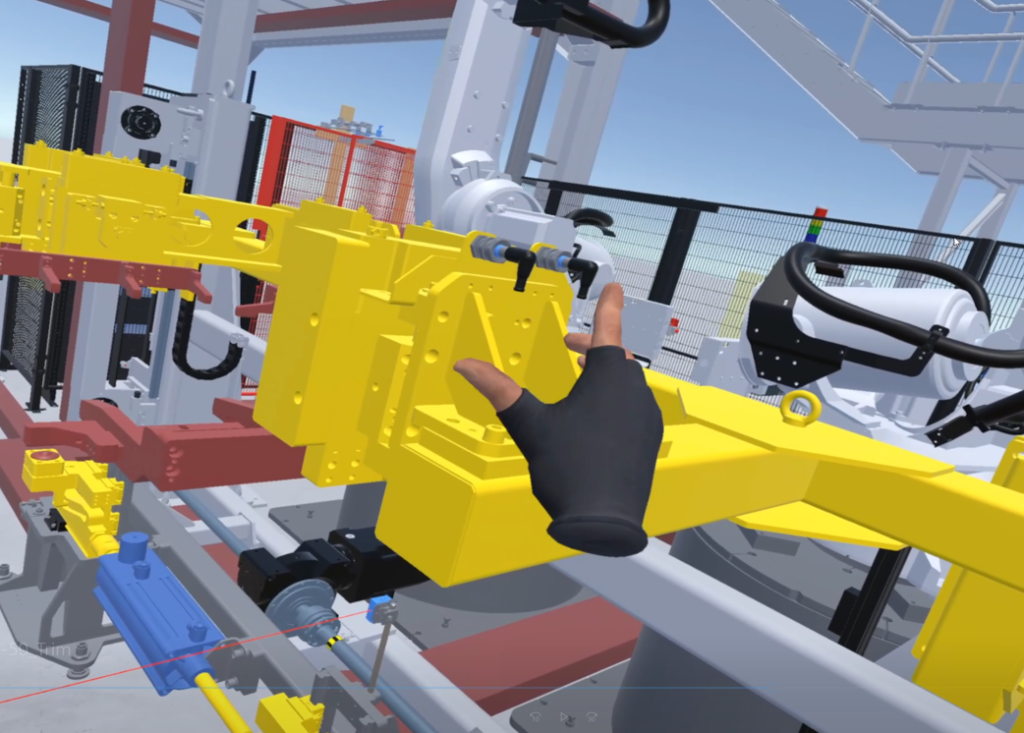Virtualization has long since found its way into the industrial day-to-day, opening up new potential for optimizing processes. onoff engineering is implementing a digital model of a metal forming plant in a customer project. The result: The plant operator can “walk through” and operate the virtual plant using VR glasses and controllers. The required products are inserted into the forming equipment as semi-finished products, then the forming process is started by two-hand operation and the finished product is removed – all digitally, in virtual 3D space and without risk for person and machine.
Features
Commissioning on the digital model
Going into the plant digitally
Real operation – virtual reality
Project Goal
- Increase planning and training quality through the use of virtual reality (VR)
- Interaction between person and machine is implemented in the digital model with virtual reality (VR)
- Virtual commissioning takes place with the “walk-in plant”
- Training for plant operators as well as maintenance and servicing takes place in a realistic manner
Technical Realization
- Development of the digital twin in 3D and coupling with the plant control
(SIEMENS TIA S7-1516F model) - For virtual commissioning (VIBN), the machine or plant design was exported from CAD to virtual reality (VR), virtually equipped with the automation components and connected to the programming systems for commissioning the prepared software
- To depict the reality for the plant operator, it is displayed in the room using virtual reality
- For planners, designers, maintenance technicians and operators, working with digital models is entirely risk-free in its use – without the possibility of machine damage or personal injury
Summary
In practice, the digital model proves to be extremely valuable: With the solution implemented by onoff, the customer can identify planning errors and perform risk assessments efficiently and significantly earlier than with a conventional implementation. During the digital walk-through of the plant, it was discovered that the access to an installed drive had not been planned in a maintenance-friendly way. The change was implemented and reviewed again digitally. This meant that no system parts were ordered incorrectly and the system could be implemented without errors.
Training for operators and maintenance technicians could be performed in a qualified manner using the digital model, taking safety aspects into account even before the plant was built.


